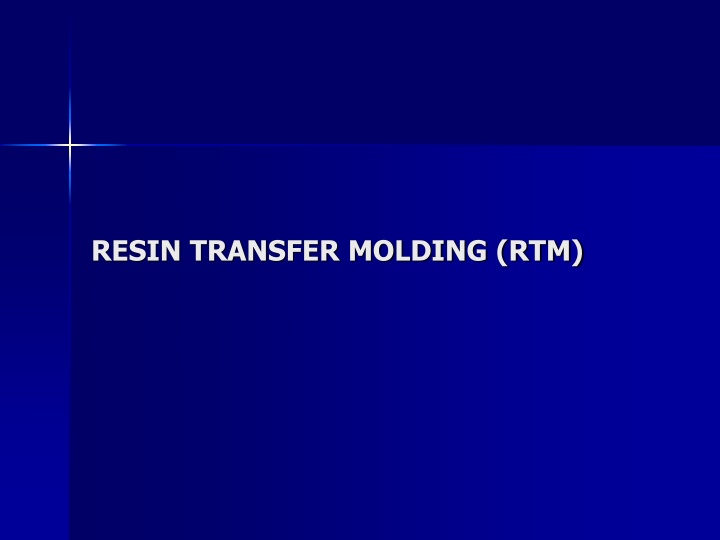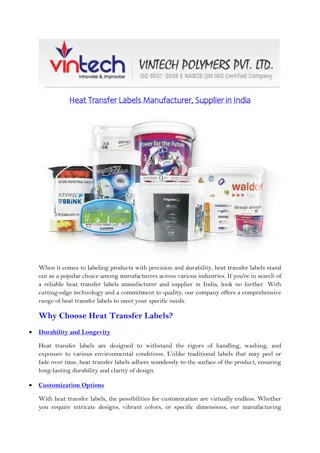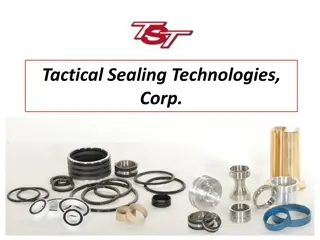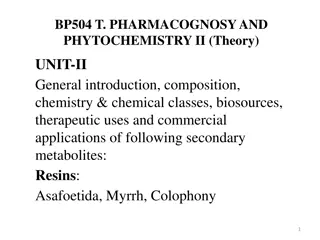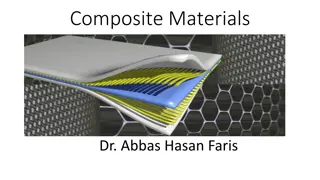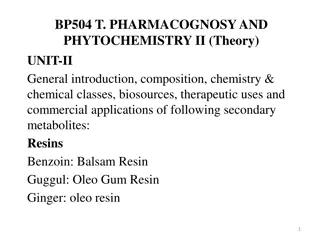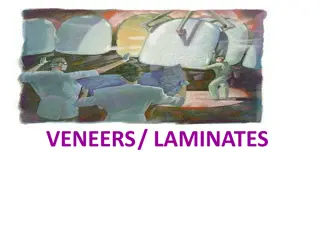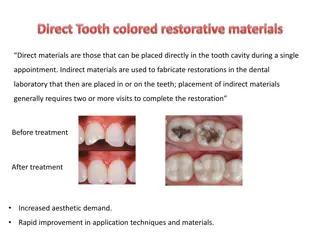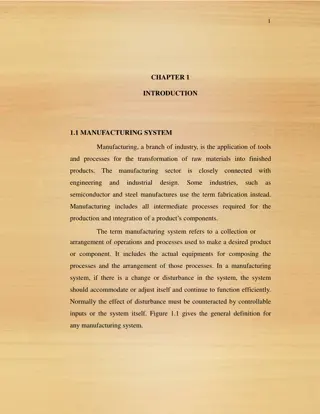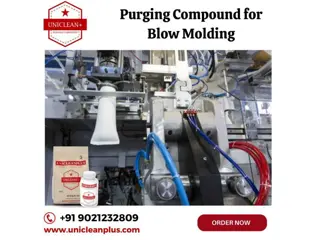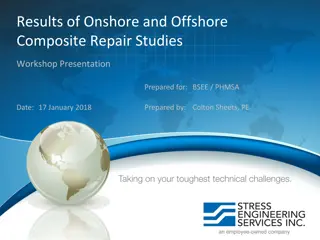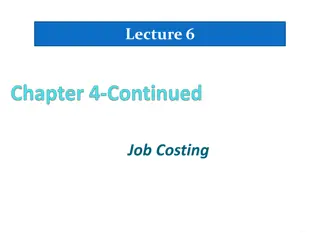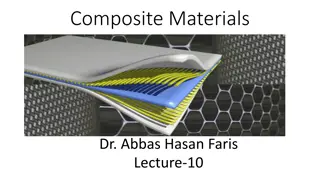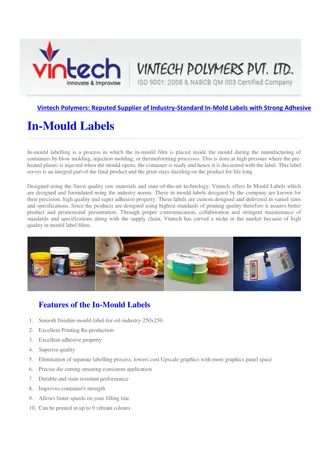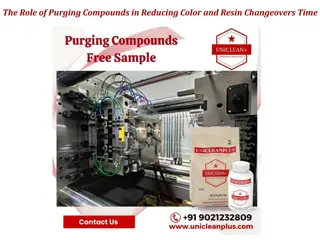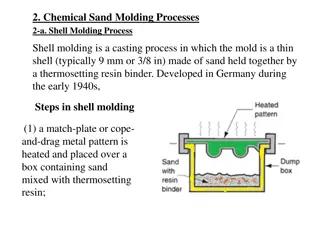Resin Transfer Molding (RTM) Process for Composite Manufacturing
Resin Transfer Molding (RTM) is a process of impregnating dry reinforcements with wet thermosetting resin in a closed mold under pressure. It allows for production rates comparison and usage of various reinforcements like E-glass, S-glass, carbon/graphite, and aramid. The design of preforms and choice of resins play crucial roles in the success of RTM. Equipment used in RTM includes resin/curing agent mixing equipment and positive displacement piston pumping cycles.
Download Presentation

Please find below an Image/Link to download the presentation.
The content on the website is provided AS IS for your information and personal use only. It may not be sold, licensed, or shared on other websites without obtaining consent from the author.If you encounter any issues during the download, it is possible that the publisher has removed the file from their server.
You are allowed to download the files provided on this website for personal or commercial use, subject to the condition that they are used lawfully. All files are the property of their respective owners.
The content on the website is provided AS IS for your information and personal use only. It may not be sold, licensed, or shared on other websites without obtaining consent from the author.
E N D
Presentation Transcript
RTM PROCESS impregnating preformed dry reinforcement in a closed mold with wet thermosetting resin under pressure production rate comparison 2 - 8 pph (parts per hour) spray-up 0.5 pph SMC, injection molding 30 pph (chopped fibers, high pressures requires >>$ tooling)
REINFORCEMENTS USED IN RTM type E-glass, S-glass carbon/graphite aramid form mat fabric textile preform architecture (knitted, braided, 3-D stitched) preforms - preshaping of reinforcement
DESIGN OF PREFORMS compression of fiber preform into the mold (denser the fiber, the more resistance it offers to impregnation by resin) fiber orientation (resin flows faster along the length of the fiber than across it) multiple layers or plies (impede or complicate the resin distribution)
RESINS USED IN RTM polyester, vinyl ester, epoxy desired resin characteristics must remain liquid as it is held in the reservoir prior to injection must impregnate fiber preform quickly and uniformly without voids must gel as quickly as possible once impregnation occurs (fast cycle time) must possess sufficient hardness to be demolded without distortion low viscosity critical (< 1,000 cps to impregnate preform loading of 50%) low viscosity resin requires less pressure to achieve adequate wet-out injection temp (typically elevated) of resin should be held as close as possible to minimum viscosity to insure preform impregnation, yet higher temp accelerates cure, cutting into injection time
RTM EQUIPMENT resin/curing agent (catalyst) mixing equipment positive displacement piston pumping cycle maintain accurate ratio control between resin and curing agent RTM process requires low injection pressures (30 psi - 100 psi) piston type positive displacement pumps are critical due to changing back pressure conditions - as resin is pushed through reinforcement an increasing back pressure builds against metering pumps - if slippage occurs at pump, resin/curing agent ratio will be affected with resin system components accurately metered, sent through flexible hoses to a mix head
THE MIX HEAD USES A MOTIONLESS MIXER thoroughly blends resin and curing agents together immediately prior to injection motionless mixers low volume curing agent injected into center of resin stream to assure complete and uniform mixing motionless mixers available in various diameters and lengths to suit a variety of resin viscosities and fillers
MAY BE NECESSARY TO CONTROL RESIN TEMPERATURE THROUGHOUT RTM PROCESS preheat resin (system) in reservoir, then maintain temp throughout process, using heating elements in material containers, the pumping mechanism, and the tool recirculate the material continuously through the pumping mechanism and back to the reservoir during non-pumping segment
MOLD DESIGN gasket around perimeter inlet injection port located at the lowest point of mold plug or check valve incorporated vent ports located at highest point of mold for high volume, tightly toleranced parts may use press - controls parallelism of mold set during opening and closing and holds mold closed during injection (alternative is manually clamping or fastening)
TRADITIONAL RTM PROCESS may or may not take place under vacuum (assists in minimizing air entrapment) mixer/injection head is inserted into mold injection pressure pushes check valve off its seat and allows resin to begin filling air is pushed ahead of resin resin will begin flowing from vent ports if part design is simple may be full if part design complex, may require slight overfill to vent all air vent ports are pinched off and internal pressure causes inlet check valve to close
RTM PROCESS ISSUES critical to control infusion rate and flow front of resin so that it infiltrates fiber preform evenly and completely, but quickly before gelling resin is injected in center of part to guard against formation of air pockets and minimize distance resin must travel care must be exercised to insure reinforcement does not move during injection (fiber wash)
ADVANTAGES OF RTM PROCESS closed mold process lower emissions both sides of part have tool surface finish and/or can be gel coated no air entrapment if properly designed (tooling, preform, and resin) once process established very repeatable and predictable permits relatively high fiber volume (40% - 50%) preform design can incorporate damage tolerant features close dimensional tolerances can be maintained (given proper clamping and mold closure) significant part consolidation - ability to incorporate cores, ribs, and inserts low tooling cost/short tooling lead times versatile - prototype or high production rate (tooling)
DISADVANTAGES OF RTM PROCESS preform process preparation can be labor intensive process waste may be high because preform lacks strength may have to be assembled in mold (tying up mold) preforms may be oversized in order to protrude from tool edge to provide escape route for displaced air and excess resin oversized preforms will have to be trimmed (sealing or close-out will be required over exposed reinforcement to prevent potential path for moisture ingress) movement of reinforcement during injection (fiber wash) control of resin uniformity difficult - radii and edges tend to be resin rich higher speed versions of process undeveloped - still problems filling large parts with high reinforcement content at low pressure as part consolidation increases high losses for manufacturer if part scrapped replacement cost to consumer can be significant
RELATED PROCESSES Explanation of other RTM variations (video) VARTM RTM Light (video) Infusion (video)
